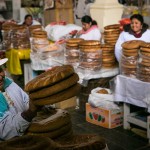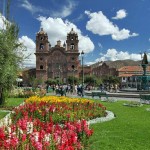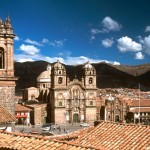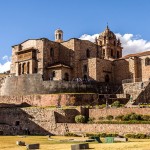Main Highlights: Colonial Cusco landmarks of UNESCO-designated Historic Center: Cusco Cathedral, Koricancha, and Saint Dominique Convent • Saint Blas • Saint Peter’s Market.
Description: Our exclusive half-day, afternoon tour starts at San Cristobal Plaza to enjoy a panoramic view of the city. We will then visit Saint Peter’s market, where we will be able to appreciate the local flavors and learn about some of the local ingredients that contribute to the world-famous Peruvian gastronomy. We will then continue to the Koricancha Temple that will welcome us with its splendor. The Golden Precinct is the meaning of its name in Quechua and we can still feel the sumptuousness of its walls that were once lined in gold sheets. From Saint Blas, the craftsmen’s quarters we will walk down along the Hatun Rumiyoc street, finding midway the Inca Roca Palace, today the Archbishop’s Palace; and we will have time to appreciate the worldwide famous Stone of the Twelve Angles. We will go on to the Main Square to visit the Cathedral that houses invaluable colonial works of art.
Important Note: People are not allowed to enter religious sites wearing shorts. Taking photos is not allowed inside the Cathedral.
The exclusive half-day Cusco City Tour is a great option for travelers interested in customizing their vacations to Peru. For a custom-designed one-of-a-kind vacation program call us toll free: 888.601.8411, send us an Email, or fill the blanks in our Peru Vacation Planner.





